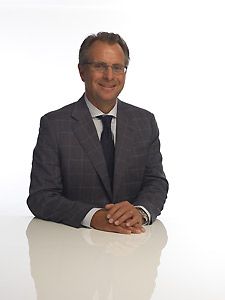The CAD/CAM Chorus: A key to our facility
January 2011 | Dental Lab Products The CAD/CAM Chorus A key to our facility Melker Nilsson – President and General Manager, Nobel Biocare North America by Noah Levine, Senior Editor
January 2011 | Dental Lab Products
The CAD/CAM Chorus
A key to our facility
Melker Nilsson – President and General Manager, Nobel Biocare North America
by Noah Levine, Senior Editor
It’s pretty safe to say Nobel Biocare was there at the beginning of the automation of the dental industry. The global company’s NobelProcera system has been in the U.S. for close to 20 years, and Melker Nilsson, President and General Manager of Nobel Biocare North America said the company plans to continue it’s role as a leader as the industry continues its shift toward digital workflows.

“The digital era has not fully reached laboratories, but this is clearly where the market is headed based upon the need for increased digital precision milled restoratons, enhanced , and improved productionamong others,” he said. “There is no doubt that this is the direction Nobel Biocare is going, not only in our laboratories, but in most dental offices too. But, we are still quite far away from a total digital environment.”
In helping to create that digital environment, Nobel Biocare has invested heavily in industrial scale milling and production capabilities that it makes accessible to labs and clinicians via the NobelProcera system. Nilsson said labs choosing to enter the digital arena will have a competitive advantage over labs that do not have digital capabilities, and those labs will be even more crucial as partners to help dentists achieve the benefits available via CAD/CAM production.
“We are moving into an era where the laboratories and the clinicians will work closer together as a team,” he said.
Digital environments such as Nobel’s forthcoming NobelClinician software create the platform for this closer collaboration from the earliest stages of treatment planning through the final seating of the restoration. These digital platforms rely on the same core knowledge that makes dental technicians key parts of the team today, but it will be an adjustment to the way work gets done.
“We will see the dental technician do more work in a software environment, designing his product, not through waxups but through digital technology. . That is a pretty dramatic change,” Nilsson said.
But with the centralized production model of CAD/CAM pioneered by Nobel, Nilsson said lab technicians have a head start when they choose to shift to a digital workflow. This is because by investing in the NobelProcera scanner, Nilsson said dental labs are actually buying “a key into our multi-million dollar production facility,” and the company is dedicated to keeping that facility on the cutting edge so it is capable of producing incredibly accurate milled restorations that are custom designed for an individual case and individual patient.
“You don’t have to invest in expensive technology to invest in NobelProcera,” Nilsson said. “You invest in a scanner. We are the ones who are investing the time and money necessary to guarantee that we have the absolute latest, state of the art production process.”
Nobel Biocare currently offers 5-axis milling on most products, which leads to amazing precision in the final restoration. . Nilsson said the quality of a part milled on a machine of that scale is vastly different than something milled on a smaller system that might fit on the benchtop of a lab.
Additionally, the company is constantly leveraging its position in the global marketplace in order to offer the latest in materials. Strategic partnerships with materials leaders VITA, Noritake and Ivoclar Vivadent, allow Nobel Procera labs a wide selection of choices for the final restoration . Nilsson said the company will be launching restorations milled from Ivoclar’s e.max lithium disilicate this year, and will continue to search for new material choices in the future.
Just as important as the material options, are making sure NobelProcera labs are ready to get the most out of their systems, so a range of educational offerings are a key part of making the company’s CAD/CAM model work. Making sure labs can not only use the technology, but can use it effectively and efficiently is critical, Nilsson said.
The way he sees it, the CAD/CAM future of the dental industry is all about partnerships. In the model Nobel Biocare has created, the company handles the production side of things by leveraging its size and resources to the best advantage of the end users. Those end users-the dental labs and dentists using Nobel’s software and scanners-are then given great freedom to access the technology and resources to operate effectively and efficiently, even as the technologies continue to evolve and the industry continues to change.
“We want to allow the individual clinician and laboratory technician as much freedom as possible to design the products they want to produce in the materials they want to have all at an attractive price and within reasonable timeframes,” Nilsson said. “That is the beauty of the digital evolution. The laboratory technician will have to spend less time to produce a product that fits better at a lower price.”
Product Bites – January 19, 2024
January 19th 2024Product Bites makes sure you don't miss the next innovation for your practice. This week's Product Bites podcast features new launches from Adravision, Formlabs, Owandy Radiology, Henry Schein Orthodontics, Dental Creations, and Dental Blue Box. [5 Minutes]
Product Bites – December 22, 2023
December 22nd 2023The weekly new products podcast from Dental Products Report is back. With a quick look at all of the newest dental product launches, Product Bites makes sure you don't miss the next innovation for your practice. This week's Product Bites podcast features updated software from Medit. [2 Minutes]